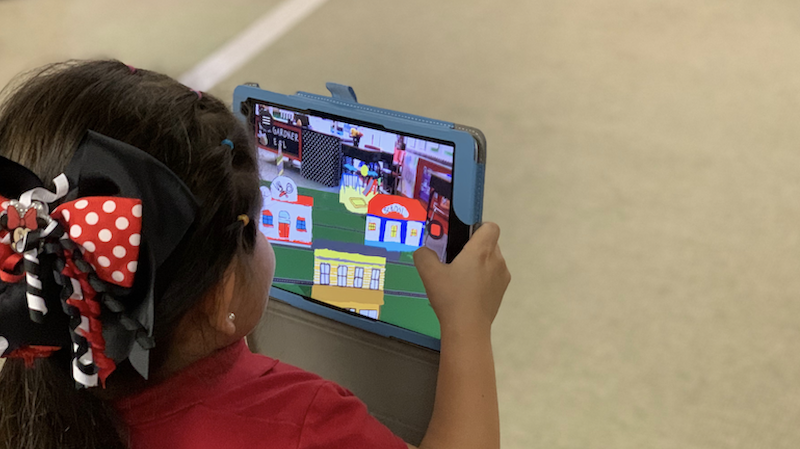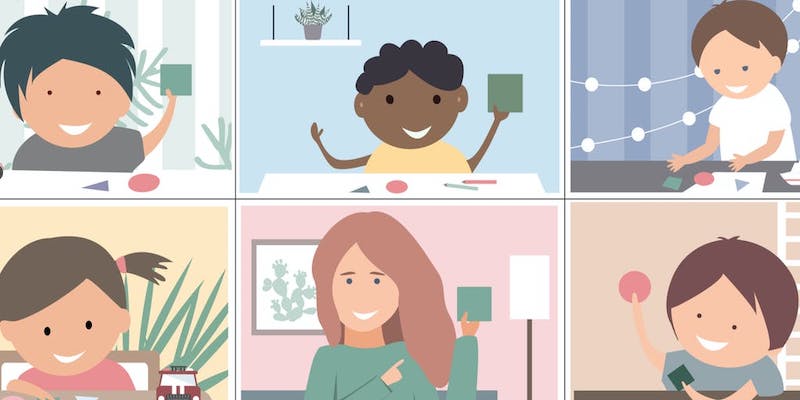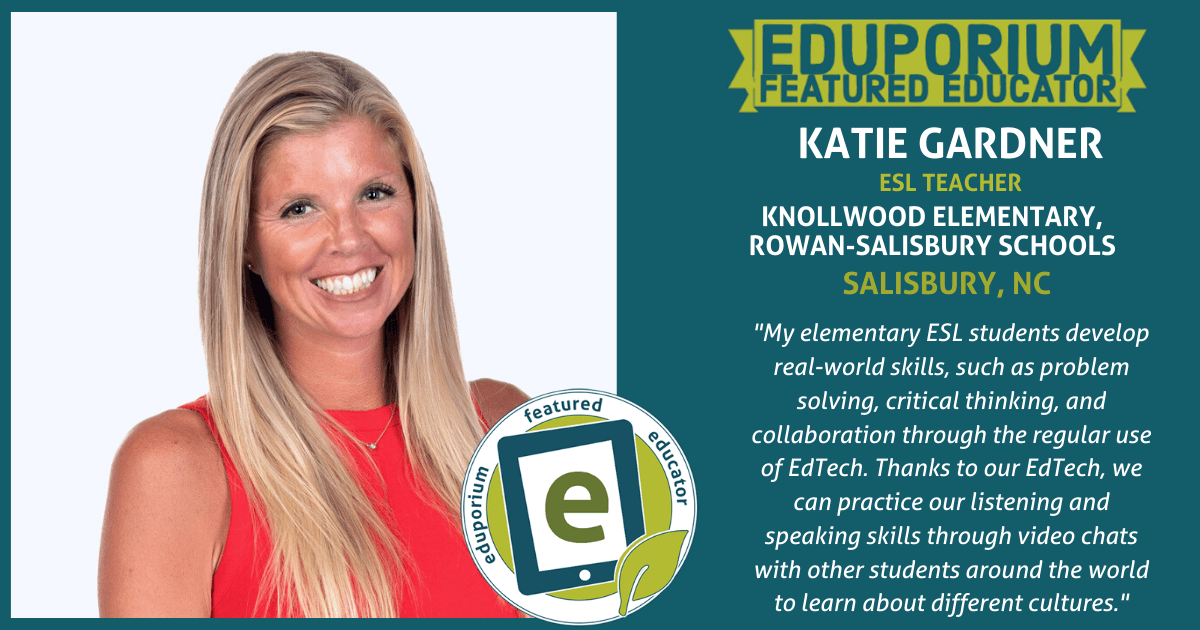We're excited to share our latest Eduporium Featured Educator interview! This month, we hear from Katie Gardner, who's an elementary ESL teacher in the Rowan-Salisbury School System in North Carolina. Katie has found great benefits from integrating various types of technology in her instruction. She's even tried using AR tools with her ESL students—efforts through which she's certainly seen some pretty great results. In fact, she's been able to facilitate differentiated tasks and global collaboration despite remote challenges!
Katie Gardner
ESL Teacher, Rowan-Salisbury Schools, Salisbury, NC

Q&A:
Please share any innovative ESL project(s) you've completed with your students or plan to complete soon.
My Kindergarten ESL students created their own augmented reality town to support learning our "community" vocabulary unit of study. So, students used iPads (like in the picture above), Keynote, and the ARMakr app to collaborate and actively engage in learning the language and content. Then, each student chose a community location and, using a kid friendly search, found an image to place in a Keynote slide.
We lowered the image opacity, traced, and colored over it with Keynote drawing tools and exported our new pictures. After sharing these images within the ARMakr app, students began building their augmented reality town around the classroom! To practice their speaking skills, students produced video tours around the town and also used pencil and paper to describe each location for authentic writing practice.
What is a challenge you faced or are facing with your EdTech use?
What resources have you used in ESL instruction or are in need of?
A challenge I faced was the transition into a new type of learning environment due to the pandemic. In the hybrid learning environment, I was certainly grateful to have face-to-face interactions with my ESL students twice a week to introduce and model the new content, language, and technology skills. We are in a 1:1 school system, so my students were equipped with an iPad to support their learning at home three days a week. During the remote or virtual learning time, communication has been such a huge key. Teachers, students, and parents must be able to communicate and connect during live teaching sessions. This truly helps us assess and give feedback or to simply provide support and check in on those in need.
Our district leaders acquired and distributed hotspots to students without Internet access to improve communication, connection, and equity in learning. Because of the new and sometimes uncomfortable environment, I've used purposeful manipulatives, like LEGOs, to excite students in ESL tasks. This prompted students to use their own toys at home to complete similar classroom lessons during remote days. For example, my Memoji videos served as guides and prompted them to create and demonstrate their learning in fun and meaningful ways.

What are some of the real-world skills you've seen your ESL students develop through regular EdTech use specifically?
How can ESL students apply them in the future?
My elementary ESL students develop real world skills, like problem solving, critical thinking, and collaboration through EdTech use. Thanks to our EdTech, we can practice our listening and speaking skills through video chats with other students around the world and learn about different cultures, which is especially helpful to them.
Similarly, we can complete reading and writing tasks with the built-in keyboard dictation and speak text accessibility iPad feature. My students are familiar with using various EdTech tools independently. Whether it's audio, video, drawing, or photography, they know they can demonstrate their learning with the creation a personalized product.
As an ESL teacher, what interests you most about Eduporium?
I certainly enjoy the blog posts on the Eduporium site. There is a variety of informative and engaging content. Above all, this sparks my curiosity and interest in new EdTech tools. It's also a tool to help grow my PLN and learn from like minded educators who have a passion for using technology to support and engage students!
We thank Katie for sharing her thoughts and experiences with us and for helping inspire other educators with similar goals. We hope these monthly features continue to inspire educators to try some new things as well! Be sure to follow us on Twitter and Instagram for more updates on all of the great things educators are doing with technology. Also, if you’d like to apply to be highlighted on our blog and social media channels as an Eduporium Featured Educator, we’d love to have you fill out the application!



